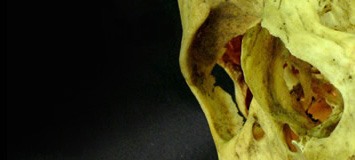C-Table v2018.0 contributors:
Name |
Data / Manuscript Contribution # |
Name |
Data / Manuscript
Contribution # |
|
|---|---|---|---|---|
| Barrow, Natalie | 17 |
His, Wilhelm | 4
|
|
| Barsley, Robert | 17 |
Kollmann, Julius | 6
|
|
| Büchly, Werner | 6
|
Lightoller, George | 11
|
|
| Bulut, Ozgur | 18 |
Listi, Ginesse | 17 |
|
| Burkitt, Arthur | 11
|
Manhein, Mary | 17 |
|
| Clement, John | 15
|
Musselman, Robert | 17 |
|
| Coqueugniot, Hélène | 16 |
O'Grady, John | 15
|
|
| Czekanowski, Jan | 8
|
Preisler, Rory | 19 |
|
| Domaracki, Monica | 1
|
Santos, Frédéric | 16 |
|
| Dutailly, Bruno | 16 |
Sievwright, Emma | 20 |
|
| Edelmann, Hermann | 12
|
Simpson, Ellie | 2
|
|
| Eggling, Heinrich von | 9
|
Sipahioglu, S | 18 |
|
| Fischer, Eugen | 7
|
Stadtmüller, Franz | 10
|
|
| Forrest, Alex | 14
|
Stephan, Carl | 1, 19, 20
|
|
| Gerasimov, Mikhail | 13 |
Taylor, Ronn | 15
|
|
| Guyomarc'h, Pierre | 16
|
Ubelaker, Douglas | 17 |
|
| Hekimoglu, B | 18 |
Welcker, Hermann | 3,5
|
|
| Henneberg, Maciej | 2
|
Yeap, Ashleigh | 20 |
Newest C-Table Contributors (Mar 2018): Emma Sievwright, Carl Stephan
Manuscripts corresponding to raw data submissions to the C-Table:
- Domaracki, M. and C. N. Stephan (2006). "Facial soft tissue thicknesses in Australian adult cadavers." Journal of Forensic Sciences 51: 5-10.
- Simpson, E. and M. Henneberg (2002). "Variation in soft-tissue thicknesses on the human face and their relation to craniometric dimensions." American Journal of Physical Anthropology 118: 121-133. Note: data at the 3month embalming stage are ommitted, and the C-table sample size for the remaining data is one less than the original published study.
- Welcker, H. (1883). Schiller's Schadel und Todtenmaske, nebst Mittheilungen uber Schadel und Todtenmaske Kant's. Braunschweig, Viehweg F and Son.
- His, W. (1895). "Anatomische Forschungen uber Johann Sebastian Bach's Gebeine und Antlitz nebst Bemerkungen uber dessen Bilder." Abhandlungen der mathematisch-physikalischen Klasse der Königlichen Sachsischen Gesellschaft der Wissenschaften 22: 379-420.
- Welcker, H. (1896). "Das Profil des menschlichen Schadels mit RontgenStrahlen am Lebenden dargestellt." Korrespondenz-Blatt der Deutschen Gesellschaft fur Anthropologie Ethnologie und Urgeschichte 27: 38-39.
- Kollmann, J. and W. Büchly (1898). "Die Persistenz der Rassen und die Reconstruction der Physiognomie prahistorischer Schadel." Archiv für Anthropologie 25: 329-359.
- Fischer (1905). "Anatomische Untersuchungen an den Kopfweichteilen zweier Papua." Corr BL Anthrop Ges Jhg 36: 118-122.
- Czekanowski, J. (1907). "Untersuchungen uber das Verhaltnis der Kopfmafse zu den Schadelmafsen." Archiv für Anthropologie 6: 42-89.
- Eggeling, H. v. (1909). Anatomische untersuchungen an den Kopfen con cier Hereros, einem Herero- und einem Hottentottenkind. Forschungsreise im westrichen und zentraien Sudafrika. Schultze. Jena, Denkschriften: 323-348.
- Stadtmüller, F. (1922). "Zur Beurteilung der plastischen Rekonstruktionsmethode der Physiognomie auf dem Schadel." Zeitschrift fur Morpholologie und Anthropologie 22: 337-372.
- Burkitt, A. N. and G. H. S. Lightoller (1923). "Preliminary observations on the nose of the Australian aboriginal with a table of aboriginal head measurements." Journal of Anatomy 57: 295-312.
- Edelmann, H. (1938). "Die profilanalyse: Eine studie an photographischen und rontgenographischen durchdringungsbildern." Zeitschrift fur Morpholologie und Anthropologie 37: 166-188.
- Gerasimov, M. M. (1955). Vosstanovlenie lica po cerepu. Moskva, Izdat. Akademii Nauk SSSR.
- Forrest, A. S. (1985). An investigation into the relationship between facial soft tissue thickness and age in Australian Caucasion cadavers [Masters Dissertation]. Brisbane: The University of Queensland.
- O'Grady, J.F., R.G. Taylor, and J.G. Clement (1990). "Facial tissue thickness: a study of cadavers in Melbourne." International Symposium on the Forensic Sciences, Adelaide, Australia. Cited in: Taylor, R.G. and C. Angel (1998). Facial reconstruction and approximation. Craniofacial Identification in Forensic Medicine. J.G. Clement and D.L. Ranson. New York, Oxford University Press: 177-185.
- Guyomarc'h, P., F. Santos, B. Dutailly, H. Coqueugniot (2013). "Facial soft tissue depths in French adults: variability, specificity and estimation." Forensic Science International 231: 411.e1-411.e10.
or see PhD dissertation @: http://ori-oai.u-bordeaux1.fr/pdf/2011/GUYOMARCH_PIERRE_2011.pdf.
- Manhein, M. H., G. A. Listi, R.E. Barsley, R. Musselman, N.E. Barrow and D.H. Ubelaker (2000). "In vivo facial tissue depth measurements for children and adults." Journal of Forensic Sciences 45: 48-60. Note: For inclusion into the C-Table, original weight data have been converted to kg from pounds, and height data have been converted to millimetres from inches.
- *Bulut, O., S. Sipahioglu and B. Hekimoglu (2014). "Facial soft tissue thickness database for craniofacial reconstruction in the Turkish adult population." Forensic Science International 242: 44-61. Subset of 25 individuals of each sex.
- *Stephan C.N., and R. Preisler (2018). "In vivo Facial Soft Tissue Thicknesses of Adult Australians." Forensic Science International 282: 220.e221-220.e212.
- Stephan C.N., and E. Sievwright (2018). "Facial Soft Tissue Thickness (FSTT) Estimation Models—and the Strength of Correlations between Craniometric Dimensions and FSTTs" Forensic Science International 286: 128-140.
* Also see Stephan, C.N., R. Preisler, O. Bulut and M.B. Bennett (2016) Turning the tables of sex distinction in craniofacial identification: Why females possess thicker facial soft tissues than males, not vice versa. American Journal of Physical Anthropology 161: 283-295.
